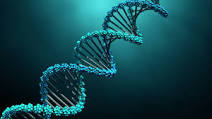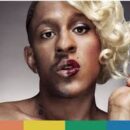Il famoso articolo sulla non genetica gay appena pubblicato su Science

La pubblicazione della ricerca più imponente mai realizzata sul ruolo dei geni nel comportamento omosessuale sta alimentando il dibattito sulla questione dell’origine dell’omosessualità: essere gay è il risultato del patrimonio genetico o di influenze ambientali?
Lo studio ha portato alla luce 5 varianti genetiche associate al fatto di avere un partner sessuale del medesimo sesso, ma la presenza di queste varianti non consente di prevedere il comportamento sessuale umano.
Questa ricerca indica, infatti, che non esiste un “gene dell’omosessualità” in grado di determinare se qualcuno avrà partner sessuali dello stesso sesso.
Le 5 varianti genetiche scoperte statisticamente significative giustificano soltanto assai meno dell’1% dell’ereditabilità del comportamento omosessuale.
Questo studio è un significativo passo avanti grazie anche alle sue notevoli dimensioni. Esso, infatti, ha coinvolto oltre 470.000 individui, facendo impallidire tutti gli studi precedenti sull’argomento.
Il piccolo contributo genetico al comportamento sessuale è in linea con il ruolo limitato giocato dai geni in altri comportamenti, quali, ad esempio, il livello dei risultati scolastici conseguiti.
La ricerca sottolinea che elementi sia biologici sia ambientali contribuiscono a modellare il comportamento sessuale umano.
Le influenze ambientali possono includere una schiera di fattori inerenti allo sviluppo, sociali e culturali, tutti in grado di influire sul comportamento.
qui l’articolo originale. In grassetto pezzi salienti
NEWSGENETICS
There’s no evidence that a single ‘gay gene’ exists.
Non esiste alcuna prova dell’esistenza di un singolo “gene dell’omosessualità”.
Instead, a combo of small genetic factors and environmental influences affects partner choice
Invece, una combinazione di piccoli fattori genetici e influenze ambientali condiziona la scelta del partner
There’s no one “gay gene,” but many genetic, environmental, social and cultural factors may combine to influence sexual behavior, researchers say.
Non esiste un singolo “gene dell’omosessualità”, ma una combinazione di molti fattori genetici, ambientali, sociali e culturali in grado di influenzare il comportamento sessuale, affermano i ricercatori.
By Tina Hesman Saey
AUGUST 29, 2019 AT 2:00 PM
UPDATED AUGUST 30, 2019 AT 3:45 PM
Publication of the largest-ever study of the roles of genes in homosexual behavior is fanning the debate over whether being gay is due to genes or environment.
La pubblicazione della ricerca più imponente mai realizzata sul ruolo dei geni nel comportamento omosessuale sta alimentando il dibattito sulla questione dell’origine dell’omosessualità: essere gay è il risultato del patrimonio genetico o di influenze ambientali?
First reported at a genetics conference in 2018, the study found five genetic variants associated with having a same-sex sexual partner (SN: 10/20/18). But those variants, called SNPs, don’t predict people’s sexual behavior, researchers report in the Aug. 30 Science.
Lo studio ha portato alla luce 5 varianti genetiche associate al fatto di avere un partner sessuale del medesimo sesso, ma la presenza di queste varianti non consente di prevedere il comportamento sessuale umano.
“There is no ‘gay gene’ that determines whether someone has same-sex partners,” says Andrea Ganna, a geneticist at the Broad Institute of MIT and Harvard and the University of Helsinki.
Questa ricerca indica, infatti, che non esiste un “gene dell’omosessualità” in grado di determinare se qualcuno avrà partner sessuali dello stesso sesso.
Family studies have suggested that genetics account for about 32 percent of heritability of homosexual behavior. But each SNP, or single nucleotide polymorphism, has a very small effect on whether someone has ever had a same-sex sexual partner, the new research found.
Taking into account all the SNPs measured in the study, including those that weren’t statistically significantly associated with same-sex behavior, explained only 8 to 25 percent of heritability of same-sex behavior. When considering just those five statistically significant SNPs, that number drops to much less than 1 percent.
Le 5 varianti genetiche scoperte statisticamente significative giustificano soltanto assai meno dell’1% dell’ereditabilità del comportamento omosessuale.
But those variants could point to biological processes that are involved in choosing sex partners, the researchers say. For instance, one variant identified in the study has been linked to male-pattern baldness, and another to the ability to smell certain chemicals, which may affect sexual attraction.
“The study is a big step forward because of its huge size,” says J. Michael Bailey, a psychologist at Northwestern University in Evanston, Ill., who has worked on sexual orientation genetics but was not involved in the work. It included more than 470,000 people, dwarfing previous research.
Questo studio è un significativo passo avanti grazie anche alle sue notevoli dimensioni. Esso, infatti, ha coinvolto oltre 470.000 individui, facendo impallidire tutti gli studi precedenti sull’argomento.
“This is the first study that we can be pretty sure that they’ve identified genetic variants associated with an aspect of same-sex behavior,” Bailey says. “I’ve been a coauthor on some previous molecular genetic studies that were much more tenuous. I believe these results will replicate.”
But Bailey disagrees with some of the study’s conclusions. For instance, Ganna says that people who have exclusively same-sex or exclusively opposite-sex partners are genetically distinct from people who have partners of both sexes. That means that sexuality may not be a continuum from completely heterosexual to homosexual after all. So the Kinsey scale, which scores people’s sexual behavior along a spectrum with bisexuality in the middle, may need to be rethought, the researchers say.
But the Kinsey scale accurately predicts men’s arousal when shown erotic pictures of either men or women, Bailey says. That makes it a far better tool than the genetic score for predicting sexual preference, he says.
Qazi Rahman, a psychologist and sexual orientation researcher at King’s College London, has bigger quibbles with the study. “I should be really excited about this,” he says. But “despite being an ardent believer in the biological basis of sexuality, I’ve found this study problematic, and I’m not at all sure what was found and whether that holds up.”
Rahman points to what he sees as inconsistencies in the data and possible bias in the people who volunteered to participate in the study. The study drew volunteers from two big genetic databases, the UK Biobank and the consumer DNA testing company 23andMe, and from three smaller studies. Participants answered questionnaires about how many sexual partners of each sex they had ever had. 23andMe customers also responded to questions about attraction, sexual identity and fantasies.
But only 5.5 percent of UK Biobank participants and about 1.5 percent of 23andMe’s customers joined the study. Such low participation rates could skew the results, or point to genetic variants that make people more likely to sign up for a study. “What you’re getting is genetic influences on self-selection into a study, not genetic influences on same-sex behavior,” Rahman says.
It’s legitimate to question where study participants come from, but there’s no way to know whether that bias is affecting the results, says coauthor Benjamin Neale, a geneticist at Massachusetts General Hospital in Boston and the Broad Institute.
The study wasn’t designed to address sexual orientation or identity, but the same variants associated with same-sex behavior were also associated in 23andMe participants with attraction, sexual identity and fantasies. The small contribution of genetics to sexual behavior is in line with genetic contributions to other behaviors, such as level of education attainment. “There’s a lot of room for nongenetic effects,” Bailey says.
Il piccolo contributo genetico al comportamento sessuale è in linea con il ruolo limitato giocato dai geni in altri comportamenti, quali, ad esempio, il livello dei risultati scolastici conseguiti.
The authors don’t disagree. The study underscores that elements of both biology and one’s environment may play roles in shaping sexual behavior, Neale says. Environmental influences may include an array of developmental, social and cultural factors that all could affect behavior, he says.
La ricerca sottolinea che elementi sia biologici sia ambientali contribuiscono a modellare il comportamento sessuale umano. Le influenze ambientali possono includere una schiera di fattori inerenti allo sviluppo, sociali e culturali, tutti in grado di influire sul comportamento.
That’s true, says coauthor J. Fah Sathirapongsasuti, a computational biologist at 23andMe in Mountain View, Calif. But, he says, “just because something is not completely genetic or something has an environmental, or what we call nongenetic, component doesn’t mean it’s a choice.”
Editor’s Note:
This story was updated August 30, 2019, to clarify the headline. There’s no single “gay gene,” but genetic and environmental factors do affect partner choice, according to the study.
Grazie ad Andrea Tedeschi










